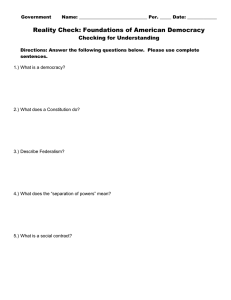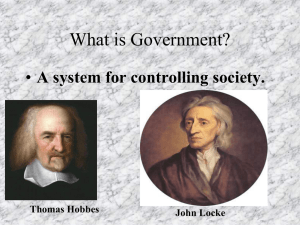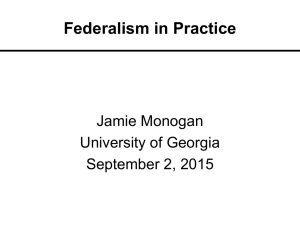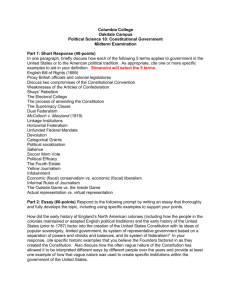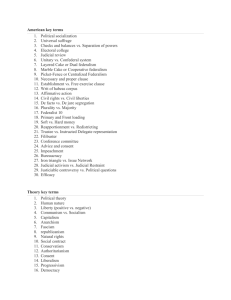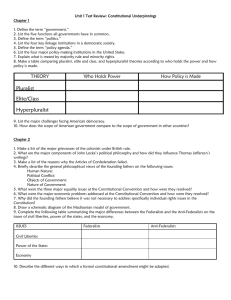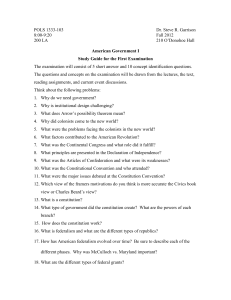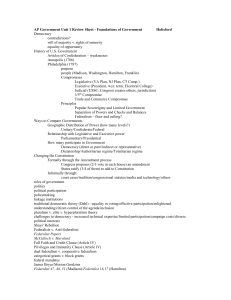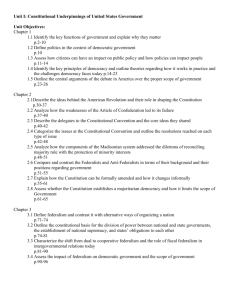study tips for chapters 1-3
advertisement
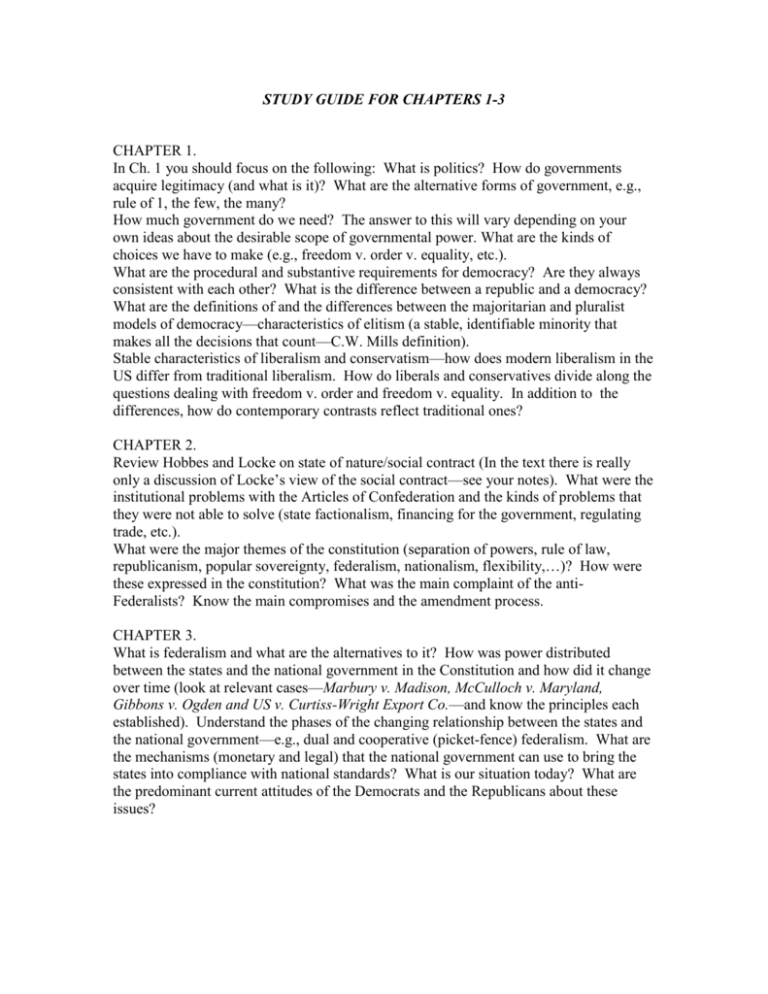
STUDY GUIDE FOR CHAPTERS 1-3 CHAPTER 1. In Ch. 1 you should focus on the following: What is politics? How do governments acquire legitimacy (and what is it)? What are the alternative forms of government, e.g., rule of 1, the few, the many? How much government do we need? The answer to this will vary depending on your own ideas about the desirable scope of governmental power. What are the kinds of choices we have to make (e.g., freedom v. order v. equality, etc.). What are the procedural and substantive requirements for democracy? Are they always consistent with each other? What is the difference between a republic and a democracy? What are the definitions of and the differences between the majoritarian and pluralist models of democracy—characteristics of elitism (a stable, identifiable minority that makes all the decisions that count—C.W. Mills definition). Stable characteristics of liberalism and conservatism—how does modern liberalism in the US differ from traditional liberalism. How do liberals and conservatives divide along the questions dealing with freedom v. order and freedom v. equality. In addition to the differences, how do contemporary contrasts reflect traditional ones? CHAPTER 2. Review Hobbes and Locke on state of nature/social contract (In the text there is really only a discussion of Locke’s view of the social contract—see your notes). What were the institutional problems with the Articles of Confederation and the kinds of problems that they were not able to solve (state factionalism, financing for the government, regulating trade, etc.). What were the major themes of the constitution (separation of powers, rule of law, republicanism, popular sovereignty, federalism, nationalism, flexibility,…)? How were these expressed in the constitution? What was the main complaint of the antiFederalists? Know the main compromises and the amendment process. CHAPTER 3. What is federalism and what are the alternatives to it? How was power distributed between the states and the national government in the Constitution and how did it change over time (look at relevant cases—Marbury v. Madison, McCulloch v. Maryland, Gibbons v. Ogden and US v. Curtiss-Wright Export Co.—and know the principles each established). Understand the phases of the changing relationship between the states and the national government—e.g., dual and cooperative (picket-fence) federalism. What are the mechanisms (monetary and legal) that the national government can use to bring the states into compliance with national standards? What is our situation today? What are the predominant current attitudes of the Democrats and the Republicans about these issues?
